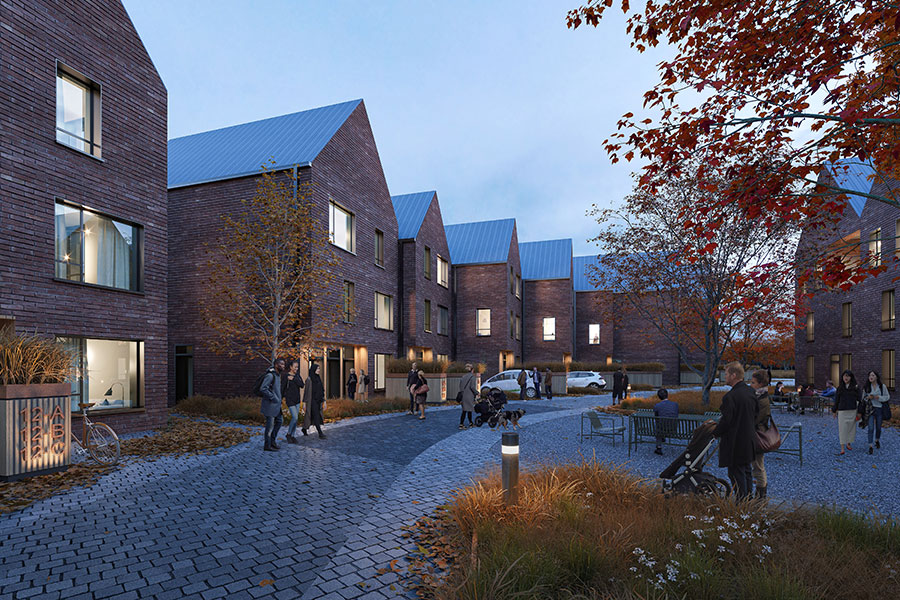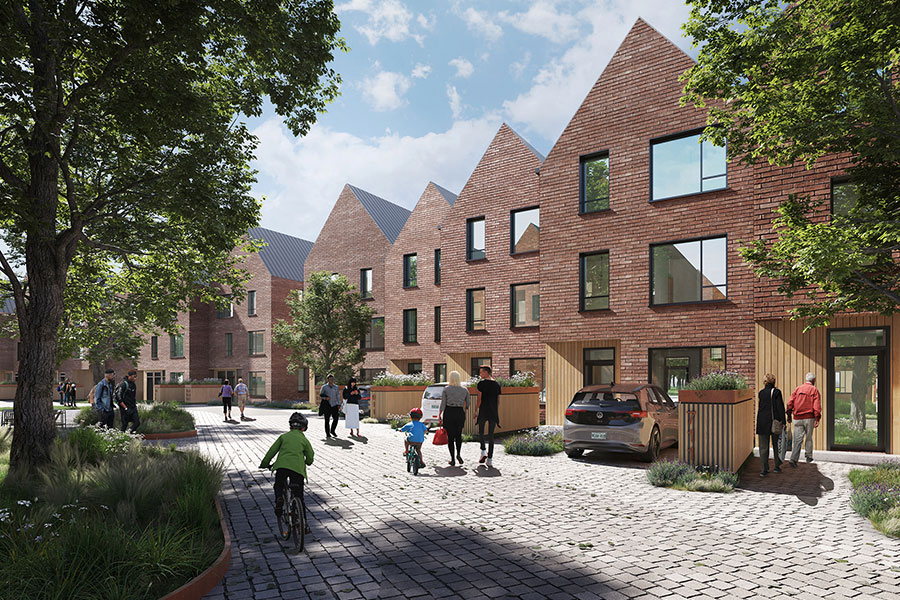JRS recognized as Top Contributor in Climate Positive Design Challenge
Posted July 6, 2023
We’re thrilled to share that JRS has been recognized in the Climate Positive Design (CPD) 2022 Beyond Neutral Annual Report as a Top Challenge Project Contributor!
The CPD Challenge aims to make landscape design projects better for the environment by setting goals to absorb more carbon and reduce emissions. JRS is committed to making our landscape designs more resilient and sustainable. The CPD’s Pathfinder tool has helped us to analyze and understand the carbon impact of our projects.
The report features our work at Queenswood Commons in Ottawa, one of many Kindred Works projects that we are working on with KPMB to introduce sustainable mixed-income rental housing strategies on urban infill properties across Canada.

The project is a residential community being built around the existing Queenswood United Church in Orleans, Ottawa. The suburban site, currently made up of mainly parking lots and lawn, will soon be home to 81 rental units, including townhouses and apartments. The landscape design includes beautiful, accessible spaces filled with meadows and trees, and encourages interaction among residents by creating shared outdoor spaces.
Our design uses a low maintenance, native-based planting strategy and supports a significant tree canopy across the site. We’ve minimized the use of concrete and typical asphalt, and created shared spaces inspired by the ‘woonerf’ model, which reduces hard surfaces and makes room for more plants and natural water drainage. This approach has helped us greatly cut down the carbon impact compared to typical designs.

Our initial analysis of Queenswood using CPD’s Pathfinder tool resulted in a “climate positive” score of 159-years – the time required for the project to offset its carbon emissions. By going back to the drawing board and making design changes to reduce carbon impact and increase carbon absorption, we were able to improve the score to just 26 years. We’re committed to making a positive impact on the environment, and this is a big step in the right direction!
Some of the specific changes we made include using low-maintenance, meadow-like planting rather than traditional lawns, maximizing the number of trees planted on site, infilling perennial beds with additional multi-stem trees and shrubs, and reducing the overall amount of carbon-intensive paving on site.
For more on our Kindred Works portfolio, please click here.
PROJECT CREDITS
Client: Kindred Works
Architect: KPMB Architects
Landscape Architect: Janet Rosenberg & Studio
Renderings by KPMB Architects